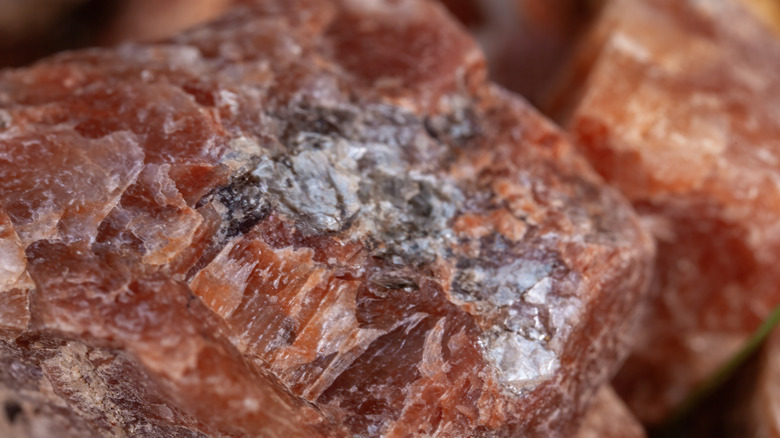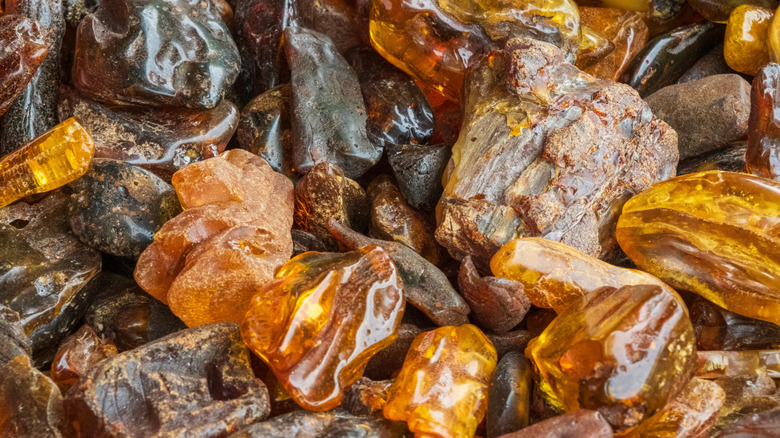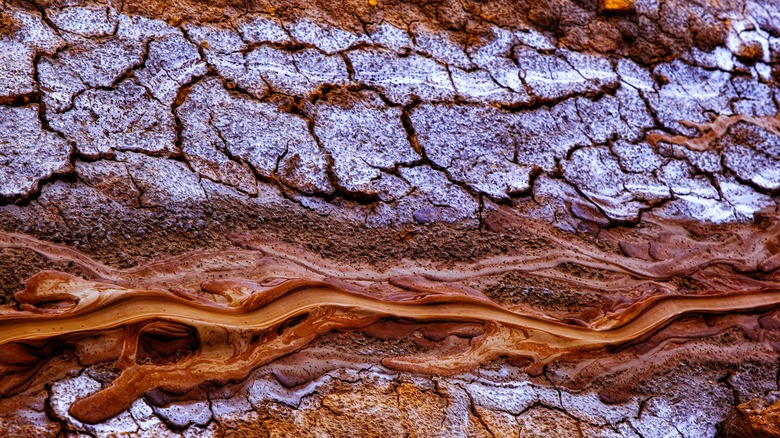Why One Woman's Ordinary Rock Actually Turned Out To Be Worth Over A Million Dollars
Scientific discoveries aren't always made by scientists. Amateur metal detectorists and even members of the public will sometimes stumble across incredible discoveries without even realizing what they have. There was the Australian prospector who spent years trying to crack a rock open only to discover it was an ancient meteorite, or the unassuming rock found in Indiana which proved there was water on Mars. But imagine using a discovery of this sort as a doorstop for decades.
That's what one Romanian woman did with a rock which actually turned out to be a rare form of amber stone. Finding prehistoric amber that is just laying around is remarkable in and of itself, but this particular specimen turned out to be one of the largest of its kind in the world. What's more, this amber nugget was found to be millions of years old, and was actually worth some money — quite a bit as it happens. The incredible discovery has since been dubbed a national treasure in its native country, which is lucky considering it formed part of its owner's home decor for years.
From tree resin to gemstone
Amber is essentially hardened tree resin. Many plants produce protective liquids, including latexes, gums, and waxes. Trees, however, produce resin, which is used to protect the plants from disease when their surface is broken. The sticky substance hardens when exposed to air and sunlight, thereby blocking up the tree's injury and acting like a sort of scab. In prehistoric times, some globules of resin ended up falling into water and becoming buried in sediment, while in other instances, ancient trees fell and their resin-covered logs became buried over long periods of time. Depending on how deep the resin was buried, it would be subjected to pressure and heat, which over millennia would cause the resin's compounds to react with each other, ultimately forming the hard translucent product we know as amber. The exact amount of time it takes amber to form can vary, but it's thought that most amber is at least 40,000 years old.
Today, amber is considered a gemstone but discoveries aren't necessarily all that uncommon in and of themselves — at least for the more common yellow, orange, or brownish amber deposits. But there are more rare and sought after examples of amber, mostly those with green, blue, or violet hues. So, when a Romanian woman's doorstop was actually identified as rumanite, a rare form of amber that is only found in that country, it was a big deal.
The unique rock that turned out to be a priceless national treasure
Rumanite has distinctive red, black, and brownish tones and is only found in Romania, specifically in the Buzău region. This rare form of amber has mostly been found near the village of Colți, buried in sandstone on the banks of the River Buzău, and it was a Colți resident who discovered what turned out to be not only the largest piece of intact rumanite in the world, but one of the largest pieces of intact amber ever discovered.
For years, however, this remarkable artifact, which weighed roughly 7.7 pounds, was used as a door stop, after the woman who discovered it in a Colți stream bed assumed it was just a unique-looking rock. Interestingly enough, the remarkable piece of amber was even passed over by thieves, who at one point broke into the woman's home to steal gold jewelry but left the amber behind.
It wasn't until later that this seemingly ordinary stone was revealed as rare rumanite. According to Spanish newspaper El Pais, a relative of the woman, who passed away in the early '90s, inherited the artifact and after taking a closer look, decided that it could be more than just a unique stone. After being sold to the Romanian state, the rock was given to specialists at the Museum of History in Krakow (Poland), who confirmed that it was in fact rumanite and estimated that it could be between 38.5 and 70 million years old. The former doorstop was quickly classified as a national treasure with a value in the region of $1.1 million.


